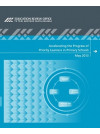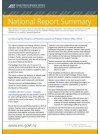This national report presents the findings of ERO’s recent evaluation about the extent to which primary schools were using effective strategies to improve outcomes for priority groups of learners. In this report ‘priority learners’ refers to Māori, Pacific, special needs, and students from low income families, who are not achieving at or above National Standards.
Methodology
ERO carried out this evaluation in 176 schools during Terms 2 and 3 in 2012 as part of the schools’ normal review cycle in the context of the major evaluation question for education reviews in schools:
How effectively does this school’s curriculum promote student learning, engagement, progress and achievement?
The evaluation framework for this evaluation focused on the students that were not achieving well, and included the following questions:
- To what extent do the board’s processes contribute to improved outcomes for learners, particularly for priority learners?
- To what extent are leaders’ processes and practices accelerating the progress of priority learners?
- To what extent are teachers focused on accelerating the progress of priority learners?
- How effective is this school in accelerating the progress of priority learners in relation to the National Standards?
In order to answer these questions ERO investigated:
- how leaders determined school targets, supported teachers to accelerate learners progress, monitored teaching practice and evaluated the impact of strategies
- how effectively teachers identified and monitored students’ progress, the range and suitability of teaching strategies they used, and how much they knew about the impact of their strategies
- the extent to which students, parents and whānau of priority learners were involved in the learning process
- what boards knew about student achievement, how they used this information to set targets for priority learners, and how they monitored progress towards meeting those targets
- whether trustees, leaders and teachers were working together to accelerate the progress of priority learners.
All data was collected by review officers in the normal review activities. Indicators to guide review officers were drawn from ERO’s Evaluation Indicators for School Reviews. This report also draws on the findings of earlier ERO reports as listed in Footnotes 2 and 3.


